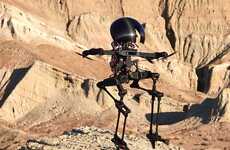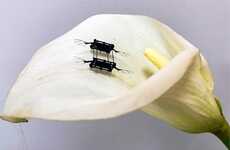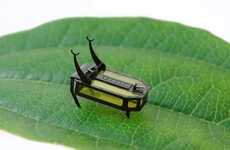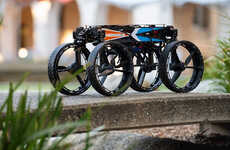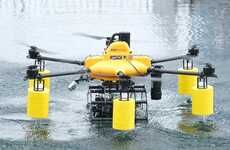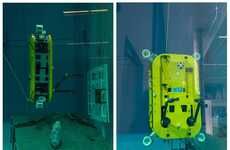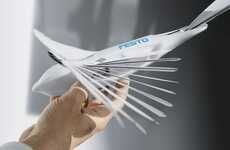
Harvard's RoboBee Microrobot Dives Between the Air and the Water
References: seas.harvard.edu & techcrunch
Harvard has designed many different 'RoboBees', or tiny flying robots, in the past, but the latest RoboBee microrobot might be the most impressive yet. The millimeter-sized bot can both swim in water and fly through the air, but the kicker is that it can dive between the two seamlessly thanks to an ingenious propulsion system.
Robots that both fly and swim aren't new, but they typically have trouble transitioning from one medium to the other — a challenge only exacerbated when the machine is the size of Harvard's RoboBee microrobot.
The specific issue is that the weight of water clinging to the bot is proportionally immense, making it difficult to gather the energy necessary for takeoff. The researchers behind the project solved the problem by using the energy latent in water itself. The RoboBee is embedded with an electrolytic plate that turns the water on the bot into hydrogen and oxygen, and it then burns those elements as fuel.
Robots that both fly and swim aren't new, but they typically have trouble transitioning from one medium to the other — a challenge only exacerbated when the machine is the size of Harvard's RoboBee microrobot.
The specific issue is that the weight of water clinging to the bot is proportionally immense, making it difficult to gather the energy necessary for takeoff. The researchers behind the project solved the problem by using the energy latent in water itself. The RoboBee is embedded with an electrolytic plate that turns the water on the bot into hydrogen and oxygen, and it then burns those elements as fuel.
Trend Themes
1. Hybrid Air-water Robots - The development of robots that can seamlessly transition between air and water opens up opportunities for versatile and efficient exploration and surveillance capabilities.
2. Robobee Microrobot - The creation of a millimeter-sized flying and swimming robot inspires innovation in miniaturization and multi-functionality for small-scale robotics applications.
3. Water-powered Propulsion - The use of water as a fuel source for propulsion in robots presents eco-friendly and sustainable solutions for energy-efficient operations in aquatic environments.
Industry Implications
1. Robotics - The robotics industry can leverage the concept of hybrid air-water robots to develop new products and services for applications in underwater exploration, surveillance, and rescue missions.
2. Aerospace - The aerospace industry can explore the potential of integrating air and water capabilities into drones and unmanned aerial vehicles (UAVs), enabling versatile operations in diverse environments for various purposes.
3. Environmental Technology - The field of environmental technology can harness the water-powered propulsion technology to design and implement eco-friendly monitoring and data collection systems in aquatic ecosystems.
3.9
Score
Popularity
Activity
Freshness


